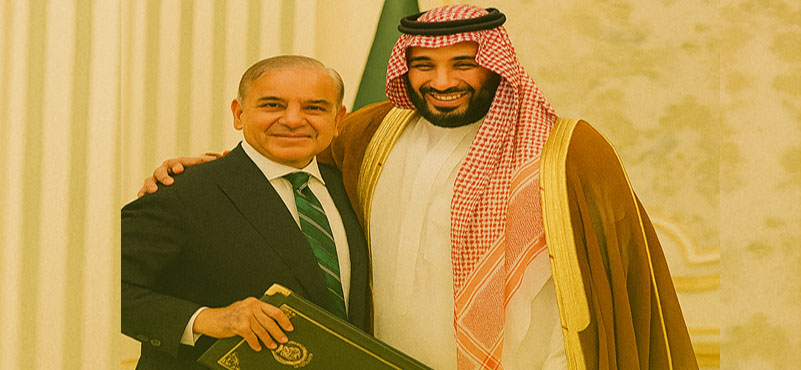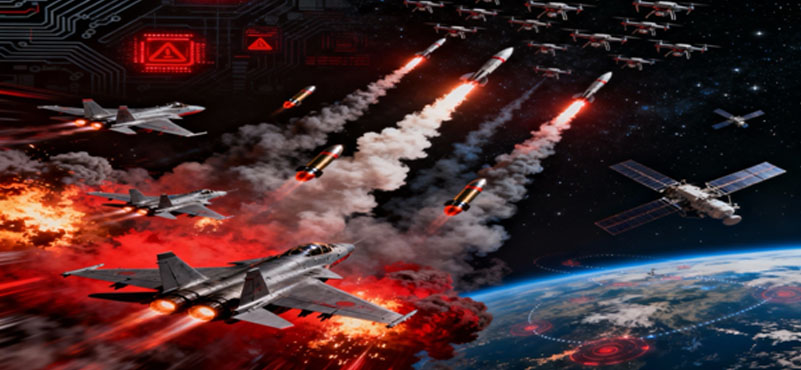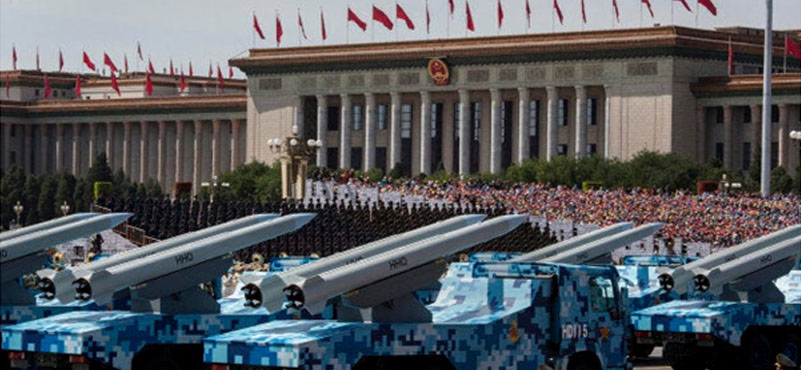Saudi Arabia and Pakistan just signed a “Strategic Mutual Defence Agreement” (SMDA) in Riyadh on 17 September is not routine. According to their joint statement, it “aims to develop aspects of defence cooperation between the two countries and strengthen joint deterrence against any aggression. The agreement states that any aggression against either country shall be considered an aggression against both.” That is the language we usually hear from military blocs like NATO, not from ad-hoc regional partners. For the Islamic world, this is unusual. Moreover post a post-emergency summit of Arab and Muslim countries held in Doha recently declared its solidarity with Qatar and condemned Israel’s bombing of the Qatari capital last week. For India, it is unsettling and has serious implications.
With the Saudi–Pakistan “Strategic Mutual Defence Agreement” (SMDA), South Asia and West Asia are no longer separate; India now stands at the centre of a converging storm. Saudi wealth, Pakistani nukes, and Hamas ideology have been tied together. India must see this pact not as symbolism but as a direct challenge to its strategic space.
A Different Kind of Relationship
For decades, Pakistan supplied military expertise to Saudi Arabia, embedding personnel within the Kingdom’s armed forces and assisting in training, while Riyadh bailed Islamabad out of recurring financial crises. The arrangement was lopsided but functional. What is novel in the new pact is the rhetoric of equality. A nuclear Pakistan and a wealthy Saudi Arabia are now projecting a joint deterrence framework. This may not yet translate into automatic military action, but the optics alone carry weight in international diplomacy.
Saudi Arabia’s calculus is layered. Riyadh continues to see Iran as its primary threat and looks to Pakistan as an additional layer of deterrence, particularly because of Pakistan’s nuclear capability. At the same time, Riyadh has no intention of jeopardising its expanding ties with India. By extending an embrace to Islamabad while reiterating that relations with New Delhi remain “stronger than ever,” Saudi Arabia is attempting to occupy both Islamic leadership space and the role of a pragmatic partner for Asia’s fastest-growing economy.
For Pakistan, the gain is immediate. It secures a diplomatic upgrade, framing itself not as a security subcontractor but as an equal partner to the most influential Arab monarchy. It also gains symbolic validation that its military strength, especially its nuclear arsenal, is an asset not just for its own survival but for the wider Islamic world.
Hamas in the Picture
The pact alone would have been significant, but its impact is compounded by Hamas’s penetration into Pakistan’s militant and political ecosystem. Their representatives attend conferences in Rawalakot and Mirpur, in solidarity and unity with leaders of Jaish-e-Mohammad and Lashkar-e-Taiba, merging issues of Gaza and Kashmir as one.
This is more than rhetorical signalling. It merges two conflicts and creates legitimacy for militancy in Kashmir under the banner of Islamist resistance. Pakistan’s mainstream parties even call for a Hamas office in Islamabad. For India, this is a direct threat. It feeds propaganda and possibly money, training, and recruits into Kashmir.
Now put the pieces together. Saudi Arabia declares Pakistan an equal partner in deterrence. Pakistan plays host to Hamas representatives and promotes the Gaza–Kashmir link. The optics are messy. Riyadh may not want to be connected to terrorist groups, but the association becomes harder to deny once the defence pact is in place.
India’s Tightrope
For New Delhi, the space for action narrows. After the Pahalgam attack, India shifted to proactive deterrence. Cross-border operations remain on the table. But any strike inside Pakistan tomorrow risks being painted as a challenge not just to Islamabad but also to Riyadh. Even if Saudi Arabia does nothing militarily, the perception could drag India into unwanted diplomatic trouble.
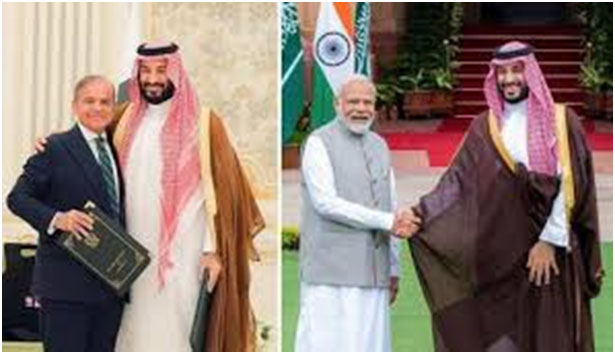
The second challenge is narrative. The idea that Kashmir is Palestine’s twin cause is gaining traction. If left unchecked, it risks turning India’s counter-terror operations into a supposed war on Islam in the eyes of many in the Gulf. That is not a fight India wants. It has invested heavily in its West Asian ties, especially with the UAE and Saudi Arabia. Projects like the India–Middle East–Europe Corridor depend on stability and trust. The Saudi–Pakistan axis and the Hamas connection put that at risk.
Wider Ripples
Iran is the obvious target of the Saudi–Pakistan pact, but the ripples extend further. Tehran now confronts the prospect of a nuclear-capable Pakistan explicitly committed to Riyadh’s defence. The United States, meanwhile, may find its leverage in Riyadh reduced as the Kingdom cultivates security partnerships beyond Washington’s orbit. China, by contrast, benefits: its “iron brother” Pakistan is suddenly elevated in the Islamic world, indirectly amplifying Beijing’s strategic reach.
For Israel, the developments are deeply concerning. Saudi Arabia’s association with Pakistan allows Riyadh to deflect criticism over its normalisation talks with Tel Aviv, while Hamas’s new sanctuary in Pakistan complicates Israeli counter-terror planning. The optics of a wealthy Arab monarchy and a nuclear Muslim power locking arms will be read by some in the region as the embryonic outline of an “Islamic deterrent.”
What India Must Do
India cannot afford to treat these shifts passively. A layered strategy is essential.
First, New Delhi must reinforce its diplomatic lines with Riyadh. Saudi Arabia’s leadership has repeatedly acknowledged the value of its partnership with India in energy, technology, and defence industrial cooperation. India must emphasise that this partnership offers Riyadh long-term stability that Pakistan cannot match.
Second, India must expand intelligence collaboration with partners like Israel and the UAE. Monitoring Hamas’s activities in Pakistan, particularly in Pakistan-occupied Kashmir, is vital. The potential for recruitment, training, and financial pipelines linking Gaza and Kashmir should not be underestimated.
Third, New Delhi needs a robust information strategy. Countering the “Kashmir equals Palestine” narrative is as critical as military deterrence. India must frame its counter-terror operations as sovereign defence rather than sectarian confrontation, and engage with Islamic opinion-makers across the Gulf to prevent militant propaganda from gaining traction.
Finally, India must exercise calibrated restraint in its deterrence posture. While surgical strikes remain necessary tools, ensuring that they are not construed as threatening Saudi assets will be vital in preventing diplomatic fallout.
Likely Scenarios
The pact will not suddenly produce joint Saudi–Pakistani operations. It is more about posture. However, the risks of miscalculation have increased. A terror strike traced back to Pakistan, followed by an Indian counter-operation, could trigger a diplomatic storm if interpreted through the lens of the new defence pact. Hamas’s presence in Pakistan further raises the possibility of proxy-driven escalation that drags regional players into unintended entanglements. Hamas could exploit Pakistani territory to plan strikes, dragging West Asia deeper into South Asia’s conflicts. The talk of an Islamic nuclear bomb, though unsaid, could also surface, or apprehensions of placing some nukes in Saudi Arabia create complexities.
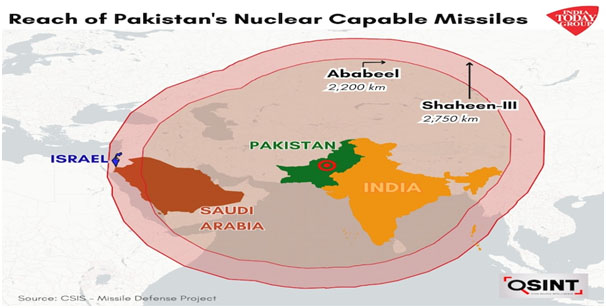
Closing Thoughts
What emerges is not an isolated pact but a writing on the wall that South Asia and West Asia are merging as security theatres. India cannot treat them separately anymore. The Saudi–Pakistan defence pact and Hamas’s presence in Pakistan together change the ground rules.
For New Delhi, the lesson is clear. Diplomacy, deterrence, and narrative control must all work in tandem. Riyadh will still look to India as a vital partner, but Pakistan has managed to insert itself back into the game. India’s task is to hold its position without letting terrorism or symbolism trap it.
This is not a crisis yet. It is a warning shot of how alliances and narratives are being reshaped. India will need resilience and foresight, not just reaction, to navigate an increasingly interconnected security environment.
ABOUT THE AUTHOR
 Lieutenant General A B Shivane, is the former Strike Corps Commander and Director General of Mechanised Forces. As a scholar warrior, he has authored over 200 publications on national security and matters defence, besides four books and is an internationally renowned keynote speaker. The General was a Consultant to the Ministry of Defence (Ordnance Factory Board) post-superannuation. He was the Distinguished Fellow and held COAS Chair of Excellence at the Centre for Land Warfare Studies 2021 2022. He is also the Senior Advisor Board Member to several organisations and Think Tanks.
Lieutenant General A B Shivane, is the former Strike Corps Commander and Director General of Mechanised Forces. As a scholar warrior, he has authored over 200 publications on national security and matters defence, besides four books and is an internationally renowned keynote speaker. The General was a Consultant to the Ministry of Defence (Ordnance Factory Board) post-superannuation. He was the Distinguished Fellow and held COAS Chair of Excellence at the Centre for Land Warfare Studies 2021 2022. He is also the Senior Advisor Board Member to several organisations and Think Tanks.

